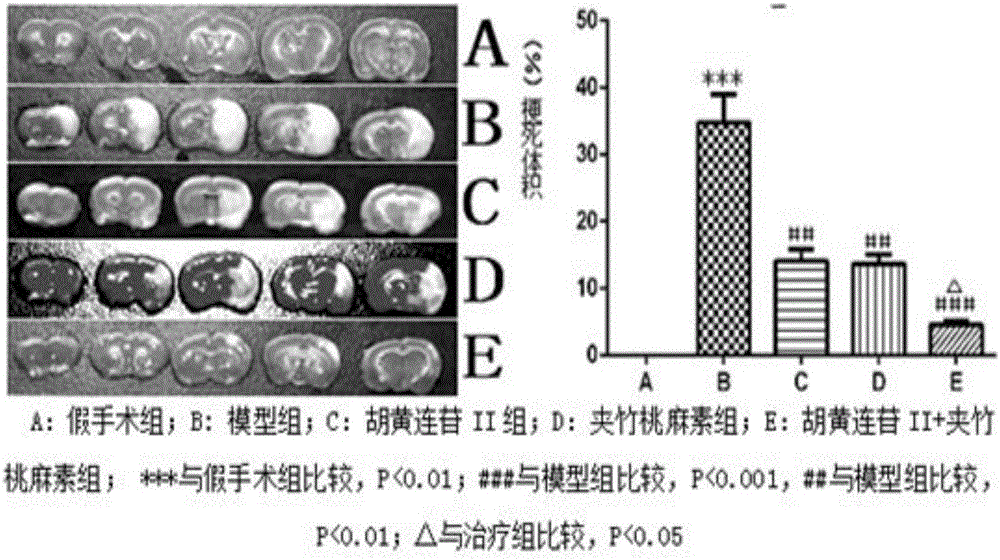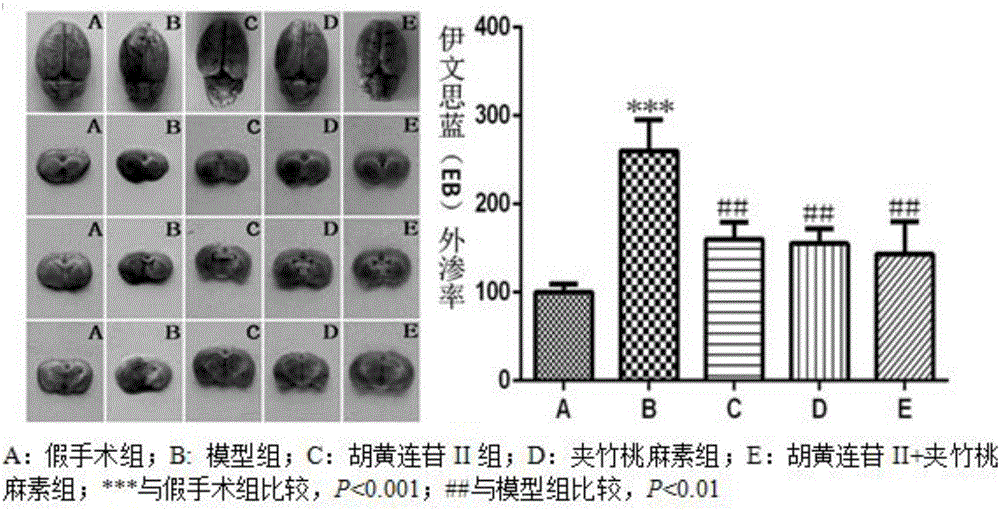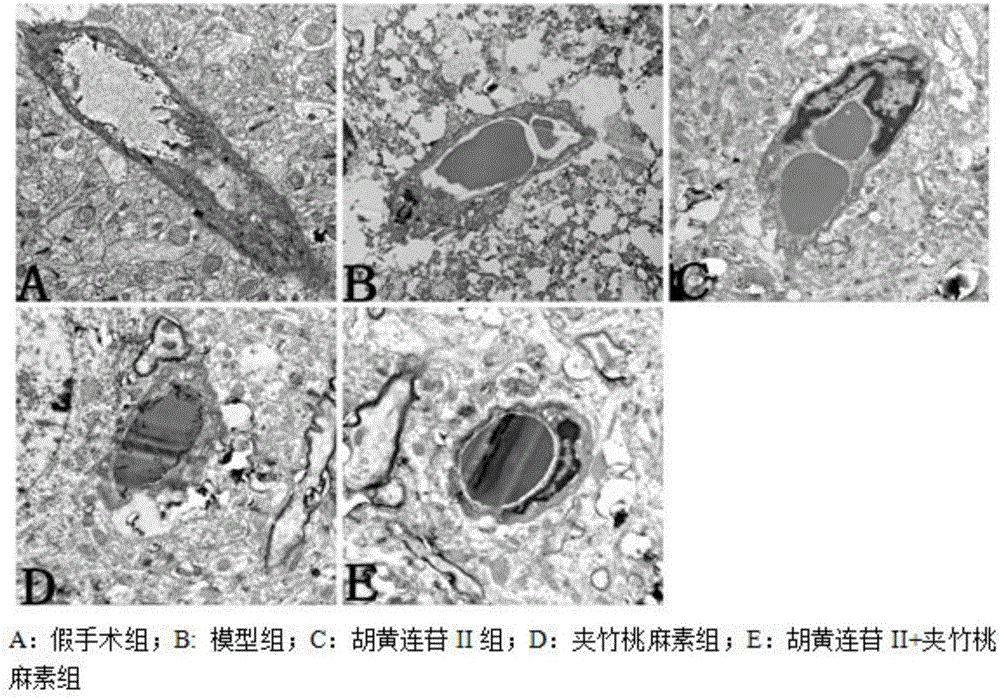Applications of picroside II in treating cerebral arterial thrombosis
A technology of ischemic stroke and berberine, which is applied in the application field of berberine II to treat ischemic stroke, to improve neurological dysfunction, reduce cerebral cortex neuron structural damage, and achieve excellent therapeutic effects
- Summary
- Abstract
- Description
- Claims
- Application Information
AI Technical Summary
Problems solved by technology
Method used
Image
Examples
Embodiment 1
[0026] The mNSS method was used to evaluate the effect of berberine II on the neurobehavioral function of cerebral ischemia-reperfusion rats, and the specific steps were as follows:
[0027] Step 1: The middle cerebral artery occlusion (MCAO) model was established by using the suture method through the left external carotid-internal carotid artery. Fix the laser Doppler blood flow detector (PE-5001, Swedan) probe on the dura mater through the bone hole, record the blood flow changes in the blood supply area of the left middle cerebral artery, and when the blood flow becomes stable, pass through the left The external carotid-internal carotid artery thread is inserted, and the thread plug is pulled out after 2 hours of ischemia to achieve blood reperfusion, so that the peak value of regional cerebral blood flow (rCBF) after the thread plug is inserted is reduced to 30% or less of that before thread insertion, and the thread is pulled out After embolization, the rCBF recovered ...
Embodiment 2
[0040] TTC staining was used to detect the effect of berberine II on the volume of cerebral infarction in rats with cerebral ischemia-reperfusion. The specific steps are as follows:
[0041] TTC (2,3,5-triphenyltetrazolium chloride) staining was used to observe the effect of berberine II on cerebral infarct volume in MCAO rats. TTC itself can be used as a redox indicator, and dehydrogenases in living cells (especially succinate dehydrogenase in mitochondria) can reduce TTC to the red formazan compound TPF (1,3,5-triphenylformazan), The ischemic infarcted tissue is pale due to the loss of dehydrogenase activity due to tissue necrosis, while the normal tissue is dark red. After 22 hours of cerebral ischemia-reperfusion, rats were deeply anesthetized with 10% volume concentration of chloral hydrate, and five slices of 2mm thick brain coronal slices were taken. Incubate for 10 min in the dark in an incubator. TTC staining results as figure 1 As shown, the brain tissue of the ra...
Embodiment 3
[0043] Test the effect of berberine II on the blood-brain barrier (BBB) of cerebral ischemia-reperfusion rats, the specific steps are as follows:
[0044] (1) Test the brain water content to evaluate the effect of pupagoside II on the degree of cerebral edema in cerebral ischemia-reperfusion rats:
[0045] Establish the MCAO model of rats. After 22 hours of cerebral ischemia and reperfusion, quickly decapitate and take the brain, separate the left and right hemispheres along the sagittal suture, take the left hemisphere, absorb the surface water with filter paper, weigh the wet weight, and bake in an oven at 110°C After 24 hours to constant weight, take it out and weigh the dry weight immediately, and calculate the brain water content: (wet weight-dry weight) / wet weight*100%. The results of brain water content are shown in Table 2. The brain water content of rats in the model group was significantly higher than In the sham operation group (P0.05);
[0046] Table 2 Brain wat...
PUM
 Login to View More
Login to View More Abstract
Description
Claims
Application Information
 Login to View More
Login to View More - R&D
- Intellectual Property
- Life Sciences
- Materials
- Tech Scout
- Unparalleled Data Quality
- Higher Quality Content
- 60% Fewer Hallucinations
Browse by: Latest US Patents, China's latest patents, Technical Efficacy Thesaurus, Application Domain, Technology Topic, Popular Technical Reports.
© 2025 PatSnap. All rights reserved.Legal|Privacy policy|Modern Slavery Act Transparency Statement|Sitemap|About US| Contact US: help@patsnap.com



